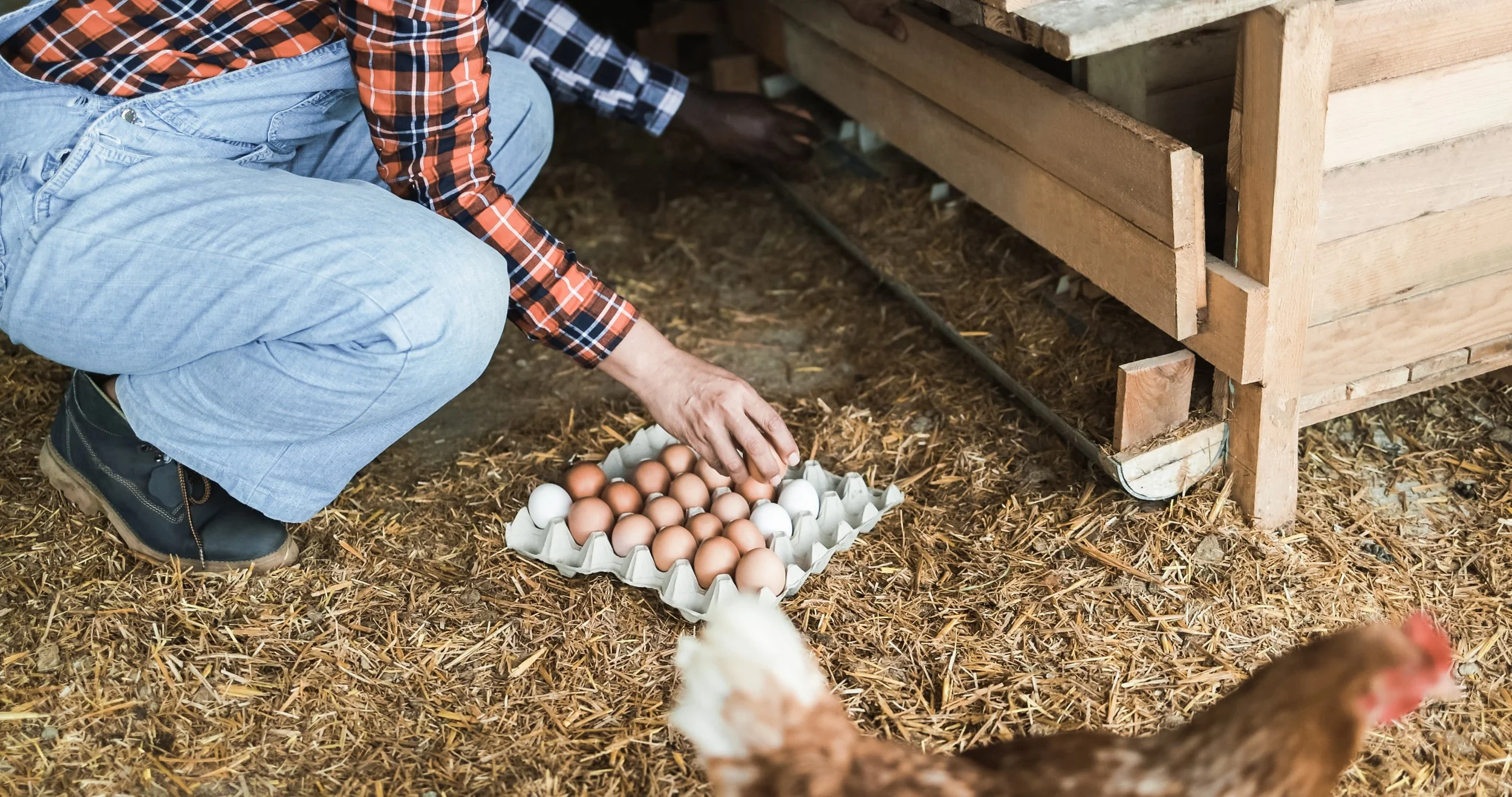Why Did My Hen Stop Laying Eggs?
Summary:
Hens naturally stop laying due to age (production peaks in first 2–3 years), seasonal changes (need 14+ hours of daylight), stress from environmental changes, molting, or health issues. However, these natural pauses reveal a deeper concern: modern hens are bred to produce 250–300 eggs annually, versus their wild ancestors' 10–20 eggs per year. This extreme overproduction causes severe health problems including bone fractures (affecting up to 85% of laying hens), reproductive tract disorders like egg binding and ovarian cancer, liver problems, and chronic exhaustion. Understanding why hens stop laying naturally helps us question whether we should expect constant production at all, given the documented physical toll on their bodies.
What's Really Happening When Hens Stop Laying
You noticed fewer eggs in the nest box and came looking for solutions. Maybe you're wondering about lighting, supplements, or feeding schedules. But before diving into ways to restart production, it's worth understanding what constant egg-laying actually does to a hen's body.
Wild red junglefowl—the ancestors of all domestic chickens—naturally lay just 10–20 eggs per year, enough to raise one or two broods and ensure their species' survival. Today's backyard hens have been selectively bred to produce 250–300 eggs annually, a biological impossibility that nature never intended.
This dramatic difference isn't just impressive, but devastating to their health.
The Natural Reasons Hens Stop Laying
Several factors naturally influence egg production, and understanding these can help you see your hen's behavior differently:
Age and Life Cycle: Hens typically peak in their first two years, then gradually decline. By age three or four, many significantly reduce laying. This isn't a malfunction, but a natural slowdown their bodies desperately need.
Seasonal Changes: Hens require approximately 14 hours of daylight to maintain steady production. As days shorten in fall and winter, their bodies naturally pause egg-laying to conserve energy for survival.
Stress and Environment: Predator scares, flock changes, loud noises, or even moving the coop can halt laying. This stress response protects hens by redirecting energy from reproduction to immediate survival needs.
Molting and Brooding: When hens shed and regrow feathers or enter brooding behavior, they stop laying completely. These natural processes can last weeks or months—and that's exactly as it should be.
Health and Nutrition: Illness, parasites, or nutritional deficiencies affect laying, but these issues often stem from the enormous metabolic demands of constant egg production.
The Hidden Health Crisis in Modern Hens
Here's what the poultry industry doesn't advertise: hyper-productive laying causes severe, often painful health problems that affect even the happiest backyard hens.
Bone Fractures and Osteoporosis: Scientific studies reveal that up to 85% of laying hens suffer broken bones due to calcium depletion. Their bodies prioritize eggshell formation over bone strength, leading to fractures that can occur from simple movements like flapping wings or being picked up.
Reproductive Tract Disorders: The unnatural rate of egg formation creates numerous serious conditions:
Egg binding: Eggs become stuck in the oviduct, causing excruciating pain and often death without intervention*
Internal laying: Eggs form inside the body cavity instead of the reproductive tract, leading to infection and internal injuries*
Oviduct prolapse: The reproductive tract can actually turn inside out from the strain**
Reproductive cancers: Chronic ovulation dramatically increases rates of ovarian and oviduct tumors***
Liver Problems: The metabolic demands of forming an egg every 24–26 hours can cause liver rupture and fatty liver syndrome.****
Chronic Exhaustion: Imagine your body producing something the size of a chicken egg every single day. The energy requirements are enormous, leaving hens perpetually depleted.*
These aren't rare complications—they're predictable consequences of breeding birds to produce far beyond their biological limits.
Even “Happy” Hens Can't Escape the System
You might think your backyard setup is different from commercial operations, and in many ways, it probably is. Your hens likely have more space, better care, and genuine affection. But they can't escape the fundamental problem: their genetics.
Every laying hen, whether from a local farm store or specialty hatchery, comes from breeding programs designed to maximize egg production.
The male chicks from these breeding lines are killed shortly after hatching because they don't lay eggs. This happens even for birds destined for the most caring backyard coops.
When your hens' productivity declines, the industry expectation is disposal. Commercial operations routinely cull hens at 18–24 months when their laying peaks pass, regardless of their overall health or remaining lifespan.
Rethinking What We Ask of Our Hens
Instead of wondering why your hen stopped laying, consider these questions:
Why do we expect a bird to produce an egg nearly every day of her adult life?
Would we demand this level of biological output from any other animal we claimed to care about?
Is a hen's value really measured only in the eggs she produces?
What if we saw a decrease in laying not as a problem to solve, but as a natural need for rest?
The modern relationship with laying hens reflects a fundamental disconnect from natural biology. We've normalized an extreme level of exploitation while telling ourselves it's different because we provide good care.
A Different Way Forward
True care for hens means questioning why we demand so many eggs in the first place. It means valuing hens for their complex social behaviors, their individual personalities, and their capacity for contentment and not their reproductive output.
If you genuinely care about your hen's wellbeing, the kindest thing you can do is let her rest when her body signals it needs to. Don't add artificial lighting to extend her laying season. Don't supplement her diet to force more production. Let her experience the natural rhythms her wild ancestors knew.
And perhaps most importantly, consider whether the eggs are worth the cost to her body at all.
The Most Compassionate Choice
Every egg represents not just a potential meal, but a biological demand we've placed on a hen's body. One that causes measurable harm throughout her life. The most radical act of care isn't providing better housing or organic feed, though these matter. It's questioning whether we need the eggs at all.
Your hen's worth isn't measured in cartons. It's found in the dust bath she takes in warm dirt, the way she communicates with her flock, her cautious curiosity about new things, and her right to grow old without constant demands on her reproductive system.
When we stop seeing hens as egg-production units and start seeing them as individuals deserving of rest and respect, we open the door to a more honest relationship with these remarkable birds.
If you truly want to help hens, the most powerful thing you can do is stop eating eggs entirely. Every egg not consumed is a demand not placed on a hen's body, and a step toward seeing these animals as more than what they produce for us.
Further Reading and Resources
How to Ditch Eggs: Guide to Egg-free Living
How to Replace Eggs: Recipes and Resources
Ready to Go Vegan? Vegan Bootcamp







